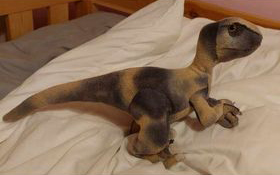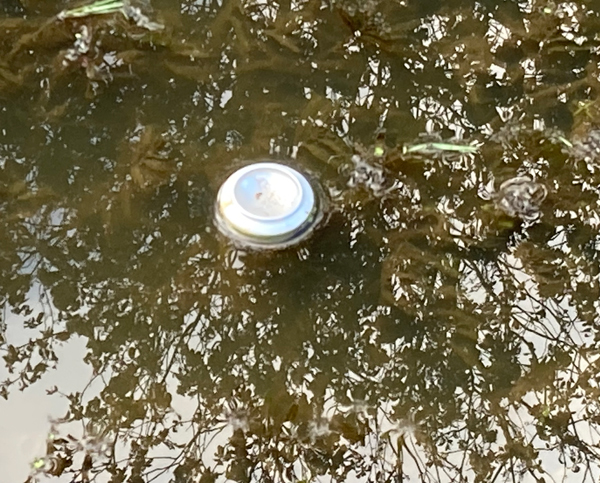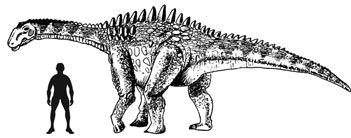The baobab tree origin has been explained in a newly published scientific paper in the journal Nature. The researchers plotted the genome of this amazing tree. The iconic baobab (Adansonia genus) is synonymous with the island of Madagascar. These spectacular, large and long-lived trees have influenced human culture. They have inspired traditions, folklore and are a symbol of the culture of many indigenous people. The researchers were able to sequence the genome of all eight extant species. The scientists postulate that the ancestor of the extant species arose in Madagascar.

A grove of magnificent baobab trees. Research has been undertaken to plot the genome and trace baobab tree origin. Picture credit: Alex Antonelli (Royal Botanic Gardens, Kew).
The Origin of the Baobab Tree
Colloquially known as “upside-down trees”, baobabs have a lot of cultural significance. These huge trees with their diminutive canopies are also sometimes called the “tree of life”. The scientists plotted the genomes of the eight recognised species and then worked out their evolutionary links and speciation. The scientific paper is the result of a collaboration between researchers from Wuhan Botanical Garden (China), Royal Botanic Gardens (Kew, UK), University of Antananarivo (Madagascar) and Queen Mary University of London (UK).
Remarkably, the research demonstrates that baobab trees dispersed over vast distances, reaching both Africa and Australia. Over time an astonishing array of pollination mechanisms have evolved exploiting lemurs, bats and hawkmoths for a reward of sweet nectar.
The Adansonia genus originated relatively recently, however, the ancestral lineage of these trees can be traced back into the Cretaceous.

The ancestor of the eight species of baobab tree known today most likely radiated from Madagascar. Two species underwent amazing long-distance geographical dispersal. One species reached Africa, the other species reached Australia. Picture credit: Queen Mary University of London.
Uncovering the Evolutionary History of the “Tree of Life”
Co-author of the paper, Professor Andrew Leitch (Queen Mary University of London), stated:
“We were delighted to be involved in this project uncovering patterns of baobab speciation in Madagascar followed by the astonishing long-distance dispersal of two species, one to Africa and another to Australia. This was accompanied by the evolution of some fascinating pollination syndromes involving hawkmoths, lemurs and bats.”
At Everything Dinosaur, we are aware of the impact of the baobab tree on collectors trying to build prehistoric animal dioramas. We had been asked on numerous occasions on where customers could find a replica of an Adansonia. Many diorama makers wanted to feature baobab trees amongst other prehistoric plants such as cycads and horsetails. CollectA introduced a baobab tree model after the successful introduction of a ginkgo and cycad tree replica.
The CollectA design team deserve credit for creating a baobab tree model.

The CollectA baobab tree model introduced circa 2015. This tree replica was added to the company’s African model range but has proved popular with model makers creating prehistoric scenes.
The CollectA model range that includes replicas of ancient trees and plants: CollectA Prehistoric Life Models.
The CollectA baobab tree replica is part of the company’s African model range. It stands an impressive thirty-five centimetres high. The newly published scientific paper (Wan et al) has uncovered a definitive link between the baobabs in Madagascar and the species found in Africa.
Fellow co-author Dr Ilia Leitch (Royal Botanic Gardens, Kew explained:
“This work has uncovered new insights into the patterns of speciation in baobabs and shows how climate change has influenced baobab distribution and speciation patterns over millions of years.”

A stunning display of baobab trees. A new study published in the journal “Nature” has identified the origins of this iconic tree and explained its widespread dispersal. Picture credit: Alex Antonelli (Royal Botanic Gardens, Kew).
Important Implications for Conservation
Past populations of Malagasy baobabs may have been influenced by competition from other types of trees and changes in local sea levels. The researchers also highlight important concerns regarding the conservation status and protection of several endangered baobab species.
Husband and wife team Andrew and Ilia Leitch added:
“We were delighted to be involved in this project uncovering patterns of baobab speciation in Madagascar before the astonishing long-distance dispersal of two species, one to Africa and another to Australia. The work also provides new insights into how climate change has influenced baobab distribution and speciation patterns over millions of years.”
A spokesperson from Everything Dinosaur commented that this new study highlights the amazing evolutionary history of the baobab tree. In addition, the genome mapping has highlighted the need to carefully monitor the remaining populations of some critically endangered baobab species.
Everything Dinosaur acknowledges the assistance of a media release from Queen Mary University London in the compilation of this article.
The scientific paper: “The rise of baobab trees in Madagascar” by Jun-Nan Wan, Sheng-Wei Wang, Andrew R. Leitch, Ilia J. Leitch, Jian-Bo Jian, Zhang-Yan Wu, Hai-Ping Xin, Mijoro Rakotoarinivo, Guy Eric Onjalalaina, Robert Wahiti Gituru, Can Dai, Geoffrey Mwachala, Ming-Zhou Bai, Chen-Xi Zhao, Hong-Qi Wang, Sheng-Lan Du, Neng Wei, Guang-Wan Hu, Si-Chong Chen, Xiao-Ya Chen, Tao Wan and Qing-Feng Wang published in Nature.
The Everything Dinosaur website: Models of Prehistoric Animals and Plants.























